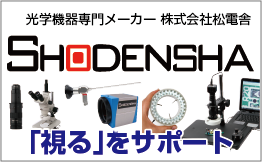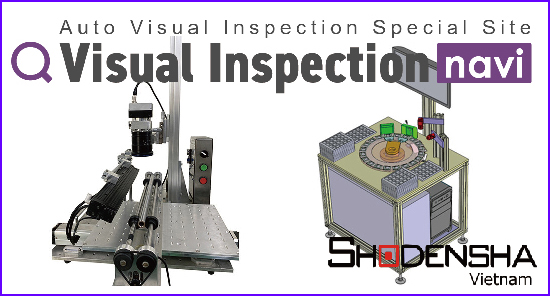Cameras and lenses can’t just be left anywhere; they need to be stored properly.
If you do not store it correctly, it may cause problems such as dust contamination and mold growth.
This time, we will introduce how to store your camera and lenses.
●Precautions when storing cameras and lenses
Things to be careful about when storing cameras and lenses are dust and moisture.
If dust gets into the lens or camera sensor, it cannot be cleaned easily and can cause glare when taking pictures.
In addition, moisture can cause the lenses to become cloudy and cause mold to grow.
If dust gets inside the camera or lens, and if it becomes moldy, the only option is to disassemble it and clean it, so it is important to prevent mold from forming.
Additionally, camera and lens cleaning (removal of dust and mold) is not covered by the manufacturer’s warranty. If you request repairs, the repair costs will be considerable.
(Items are covered by our manufacturer’s warranty immediately after purchase.)
Therefore, it is necessary to store it carefully to avoid dust and moisture.
●What is the best storage method?
Inside cupboards, drawers, and on desks, there is a high risk of dust and mold.
Even if it’s in your camera bag, there are risks.
Generally, the optimum humidity for storing cameras and lenses is said to be around 40-50%.
Humidity exceeding 60% can cause mold to grow, and even in environments with extremely low humidity.
I can’t say it’s good. Therefore, it is necessary to maintain proper humidity.
Also, extreme temperature differences can lead to condensation, so you need to be careful about temperature differences as well.
①Prepare a case to store your camera and lenses
First, prepare a case (container) to store your camera and lenses.
Placing it in a case will prevent dust from entering, and sealing it will also prevent moisture from entering.
Cases include the following。
~Dry box (moisture proof)~
A specialized moisture-proof storage for storing cameras and optical products. They range from small types to large cabinet-type types.
You can store it with peace of mind as it always maintains stable humidity.
It seals and protects it from moisture and dust.
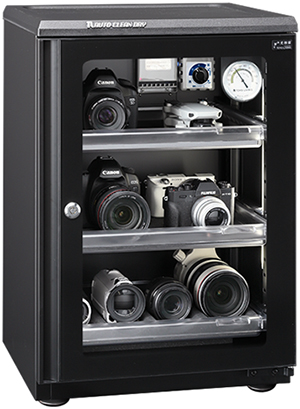 |
Homepage of Toyo Living Co., Ltd., a manufacturer of moisture-proof storage cabinets https://www.toyoliving.co.jp/products-info/ED-80CATP2B-1.html |
~Simple dry box or sealed container~
Simple dry boxes are popular and easy to use.
A sealed moisture-proof case sold by camera accessory manufacturers.
You can also check the humidity by putting a desiccant inside and a simple hygrometer.
Even beginners can easily store their cameras and lenses.
You can also use airtight food containers with rubber gaskets on the lids, which are now available at 100 yen shops and home centers.
Although it can easily protect against moisture and dust at low cost, it requires frequent humidity checks and replacement of the desiccant.
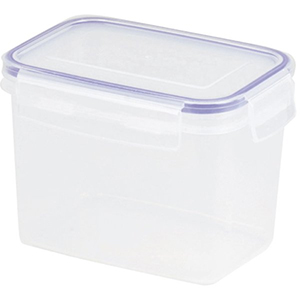 |
②Prepare desiccant
A simple dry box or airtight food container is a container, and it is necessary to add a desiccant to reduce humidity.
Commercially available desiccant for dry boxes or food-grade silica gel can also be used instead.
Be sure to include a desiccant agent and a hygrometer to check the humidity.
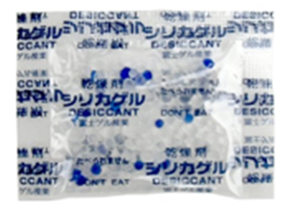
③Clean thoroughly before storing
Cameras and lenses that have been used have dust attached to them.
Clean thoroughly before storing.
There is no point in storing your camera or lens in an enclosed space if you introduce dirt into it.
④Cleaning and cleaning of the camera and lens
Blow away dust and dust from the camera and lens using a blower sold by camera accessory manufacturers.
Also, wipe off any dirt or oil on the surface with a cleaning cloth.
Wipe off sweat and oil from your hands, as this is a source of nutrients for mold.
Should the lens be removed from the camera?
It is up to you whether or not to remove the lens when storing it, but there is no problem if you store it with the lens attached.
However, the more frequently you replace or remove lenses, the greater the risk of dust getting into them.
Also, when removing the lens, put a cap on the camera lens mount and store it.
●Temporary storage of cameras and lenses
Care must also be taken when storing the camera temporarily, such as while changing lenses.
Even if you can’t see it, dirt, dust, dirt, etc. are floating in the air.
You can tell because dust accumulates on shelves at home.
Replacing lenses is a time when there is a high risk of dust and dirt getting inside.
Therefore, you need to pay attention to how you place your camera and lens.
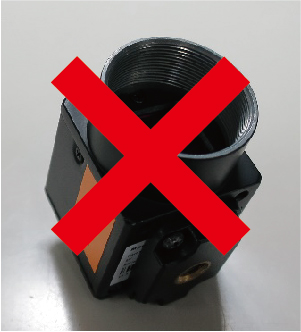 |
The camera sensor is exposed and facing the top, and dust falls onto the sensor inside the camera. |
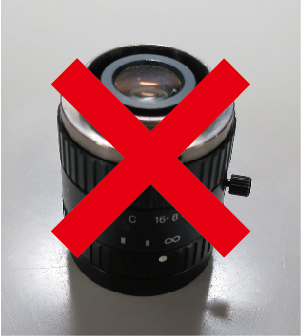 |
The lens C mount is exposed and faces toward the top, and dust falls onto the lens. |
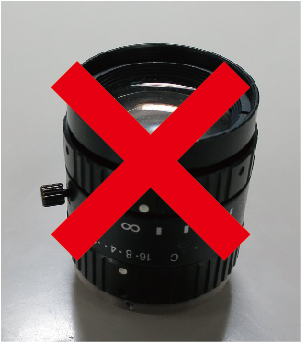 |
The object side of the lens is exposed and faces toward the top, and dust falls onto the lens. |
Cameras and lenses may come with a cap (lid) at the time of purchase.
By attaching the cap as soon as possible, you can reduce the risk of dust getting in.
Also, be careful when placing the lens on the desk when replacing it.
Instead of placing the sensor or lens facing towards the top, place it horizontally to prevent dust from falling.
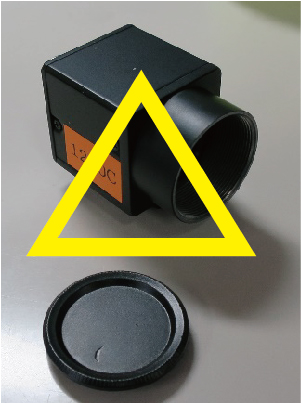 |
The camera sensor is placed horizontally, but there is still a medium risk. It is advisable to put on the cap immediately. |
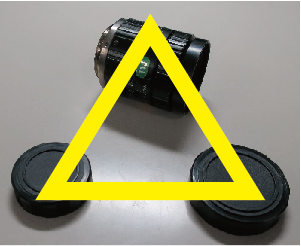 |
The lens surface is placed horizontally, but the risk is still medium. It is advisable to put on the cap immediately. |
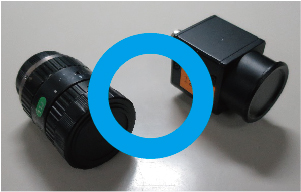 |
Caps on both ends of the lens Attach the caps to the camera |
●Summary of how to store cameras and lenses
・Be careful of dust and moisture on your camera and lens.
・If dust or mold grows on the camera or lens, it is difficult to remove it.
Therefore, store it in an environment that does not generate dust or mold.
– Store in a special case to prevent dust and mold from growing.
・Carefully take care of your camera and lens to remove dust, dirt, and oil before storing them.
Please do not bring it in.
・No problem if you leave the lens on
– Be careful when storing temporarily or changing lenses.

